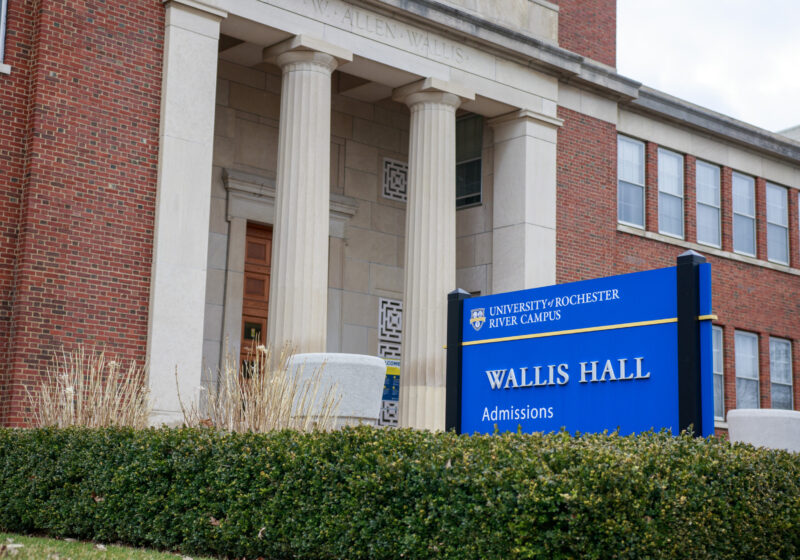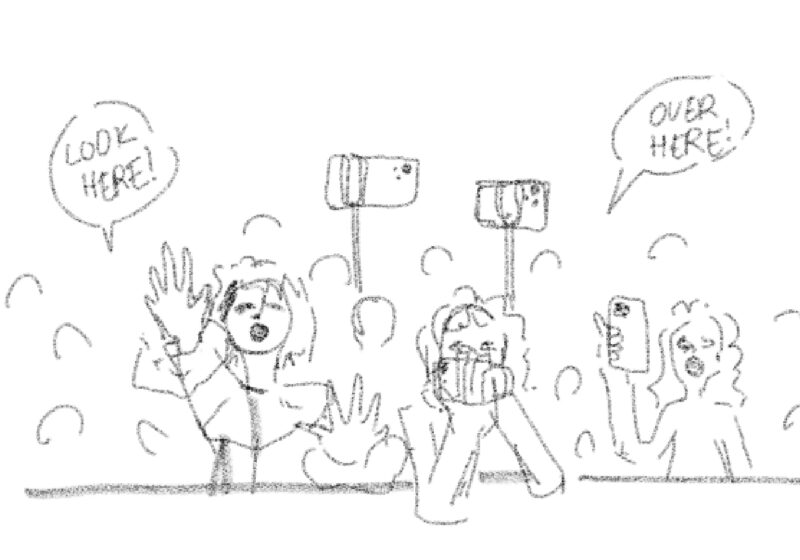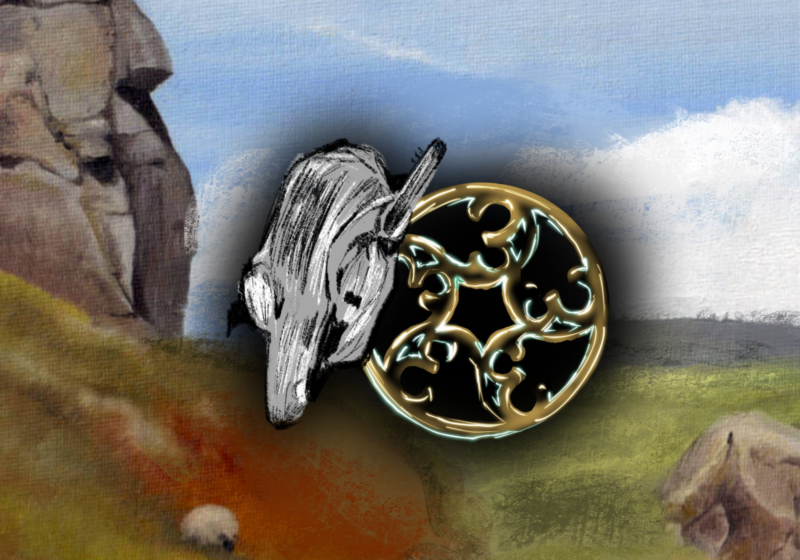This article is the first of three pieces that delves into Rochester’s July 1964 uprisings, and their resounding implications for today. News Editor Michael Vilakazi and Senior Staff Wil Aiken contributed to the research and organization of this article.
“Cars hit, stores looted, scores hurt,” read the front page of the Democrat and Chronicle.
Some Rochestarians felt upset about the property damage. Others saw the riots as the culmination of festering wounds left by an often-brutal police and discriminatory housing and employment practices.
That was Rochester in 1964. As patterns of racial injustice and police violence have again led to a public reckoning in 2020, the past echoes.
It was a hot Friday night on July 24, 1964 in the Seventh Ward when police arrived at a Joseph Avenue block party to arrest a young Black man, allegedly drunk. How exactly his arrest escalated into a three day streak of violence is debated — one story was that a police dog, brought along for the arrest, bit a child.
But what ensued is undisputed — stores were looted and their windows broken, police hosed down the protestors, and the neighborhood was destroyed.
City Manager Porter Homer first announced a state of emergency, and then a curfew, but that didn’t prevent the same events from occurring again the next night and spreading to the Third Ward. The National Guard was deployed, and the uprisings continued into Sunday, July 26.
The numbers after that third and final day told a grim story — four dead, 350 injured, and 800 arrested.
“Historians say there are two major events in the history of Rochester that shaped its consciousness, and one was the opening of the Erie canal. And the second was the so-called rebellion of 1964,” said Carvin Eison in an interview with the Campus Times. Eison is the director of “July ‘64,” a documentary about the uprisings of that summer.
But this historical moment is marked by a stark divide in how it’s remembered.
For many, including the news media and many Rochesterians in power, the three days of what some dubbed as “riots” were a complete surprise — an unthinkable event for a prosperous, progressive, northeastern city like Rochester.
According to Eison, Rochester had “more millionaires per capita than any other place in the country. So, it was a shock to the media, to the economic community, to the government here […] it was an earthquake to have a so-called riot or rebellion in Rochester.”
For others, especially those living in the areas most affected by the unrest — the predominantly Black, poor neighborhoods in the Third and Seventh Wards — the events were no surprise at all.
In a letter to Mayor Frank Lamb, Chairman of the Monroe County Liberal Party Robert Cunningham criticized the mayor for his public statement about the violence in Rochester, in which Lamb expressed disbelief that “such a thing could happen in Rochester.”
As Cunningham wrote, “We submit, Mr. Mayor, that this clear admission of ignorance of the real conditions existing in our community by the highest elected officer of our community, goes to the very heart of the problem — in a manner that none of the other explanations even approach.”
Eison, also a professor in The College at Brockport’s Department of Journalism, Broadcasting, and Public Relations, attributes this public ignorance largely to the media’s ignorance: “[T]he media’s perception is dominated by the perception of those who work there — [they] thought that the world was great and that everything was wonderful, and that Rochester was a big, important, safe, happy, wealthy community.”
The media helped perpetuate this narrative of a peaceful Rochester rattled by the unruliness, with immediate coverage of the events full of racist language.
The first sentence of the Democrat and Chronicle’s front page story on July 25 described how “about 400 Negroes defied police, stoned passing cars, broke store windows, and beat up whites.”
Another headline in that issue read, “White Lured Into Negro Trap,” and the large, front page headline declared, “Negro Mob Riots Here.”
Calling it a “riot” was a choice many disagreed with, including Eison. He also wouldn’t call the Black Lives Matter protests of today riots, even when they turn ugly.
In an interview with the Campus Times earlier this week, Eison said that “when something happens for weeks and weeks at a time, like, for example, what’s happening now in the country, or at that time what happened over three nights, that tells you it’s not a riot. It is a rebellion.”
To Eison, a riot is “a momentary aggressive response to stimulation.” It’s viewed as a hysterical, incredibly emotional response to stimulation, whereas a rebellion is an organized and sustained response to circumstances, an argument which “July ‘64” presents.
In “July ‘64,” Darryl Porter, who was president of The Matadors street club during the uprisings, revealed that the Saturday protests were planned, not just a disorganized outpouring of anger.
Additionally, people wanted to place the blame on agitators from outside the local community, according to Constance Mitchell, a civil rights activist and community leader who was featured in “July ‘64.” “But,” she said, “when you look at the list of people who were arrested, they were Rochesterians.”
Mitchell’s words are echoed by organizers of the recent protests who responded to Mayor Lovely Warren’s recent claim that the destruction was done by “outsiders.”
Both then and now, the unrest was the consequence of a community continuously oppressed. As Eison explains, “when people’s needs are not met, they will respond. And rioting, mashing up, destruction, all of those things are part of it.”
The question of why people riot, of what it accomplishes, is one that many are asking today, and one that was asked then as well.
A reporter on the street asked Porter, “Do you really think that by robbing a store and by throwing bricks — breaking the law that way — that you were gonna achieve anything?”
“[It] made the mayor and the city get up on their high horses, and they wanted to see what was going on and why it was going on,” Porter responded. “I think there should be a little more change in this world.”
The needs that weren’t met then are familiar to readers today. Housing, jobs, and a sense of safety – all denied from Black Rochesterians because of racial discrimination.
According to Jessica Saltzberg’s 2013 article, “Narratives of a Riot: The July 1964 Rochester, NY ‘Race Riot,’” most non-white residents could not find housing outside of the Third and Seventh Wards. In those two wards, 35% of the houses were designated “deteriorating and dilapidated” in a 1959 report by New York State’s Commission Against Discrimination.
Charles “Buddy” Granston, who lived near Joseph Ave (the epicenter of the damage in the uprisings) in the Seventh Ward, described in an interview for the Black Freedom Struggle Online Project how his neighborhood was called “the bottom” because the conditions were so horrible.
“We didn’t feel bad about it because when you’re at the bottom, you have nowhere to go but up,” he said.
These sub-par conditions were the result of malicious, discriminatory housing practices.
Walter Cooper, a research scientist at Eastman Kodak who got his Ph.D. from UR, often told the story of how he and his wife were victims of housing segregation in Rochester when he answered ads for 69 apartments but was refused at all of them.
And the lack of well-paying jobs for Black residents only compounded Black Rochestarians’ problems.
Despite Rochester’s overall unemployment rate sitting below 2% and thousands of unfilled jobs at high-tech companies such as Kodak, Bausch & Lomb, and Haloid (predecessor of Xerox), the unemployment rate for Black residents was at 14%, and the income disparity between white and non-white residents was higher than any other city in New York State, according to Saltzberg’s article.
“It was in fact a laughable matter among the minority community that if you put your application in at Kodak, Bausch and Lomb, Xerox or any of the corporations, that your application went into file 13 — which was the wastebasket,” Mitchell said in “July ‘64.”
Mitchell also spoke about police brutality in both the “July ‘64” documentary and the Black Freedom Struggle Online Project. In the latter, she described how the police used their dogs to terrorize her community, citing an incident where she watched officers “deliberately sic the dogs on some man,” and then stand there laughing.
For Mitchell, the dogs never served their purpose. “All it did was just force people to hate the police more,” she said.
The police dogs and the fear they brought were a common experience in the community, one that helped to explain the anger of the crowd on that first night, according to Eison.
“It was the collective memory of the people […] that forced people to come to the streets,” he said, citing the example of the police dog allegedly biting a child. “There was no record that ever said that the police dog bit a child. What happened was that […] people remembered police dogs biting people many, many other times.”
For Eison, this “collective memory” of suffering under a systematically racist Rochester created the “extraordinary pressure” that exploded into rebellion.
“That kind of pressure is what we’re seeing now,” he said earlier this week. “The kind of pressure of hydraulic police behavior, you know, where the police are kneeling on a person’s neck for 8 minutes and 46 seconds.”
The so-called riots of 1964 did achieve some changes to policing, as well as other problems plaguing Rochester. The use of police dogs for crowd control ceased. There was a significant uptick in the number of Black elected officials. The Urban League of Rochester, the anti-poverty organization Action for a Better Community, and the activist organization Freedom, Integration, God, Honor Today (F.I.G.H.T.) were established, the last of which led a long and contentious fight against Eastman Kodak for more job training programs for and the recruitment of the inner-city unemployed.
But, in many ways, Rochester still remains intrenchably divided and flawed as it was in 1964.
As Eison says, “The circumstances that took place in Rochester, New York leading up to the rebellion of ‘64 — the circumstances are still the same. The circumstances are still playing out today.”





